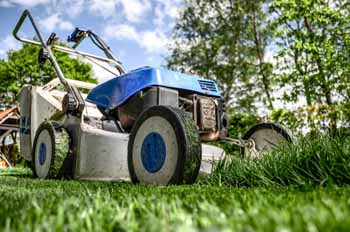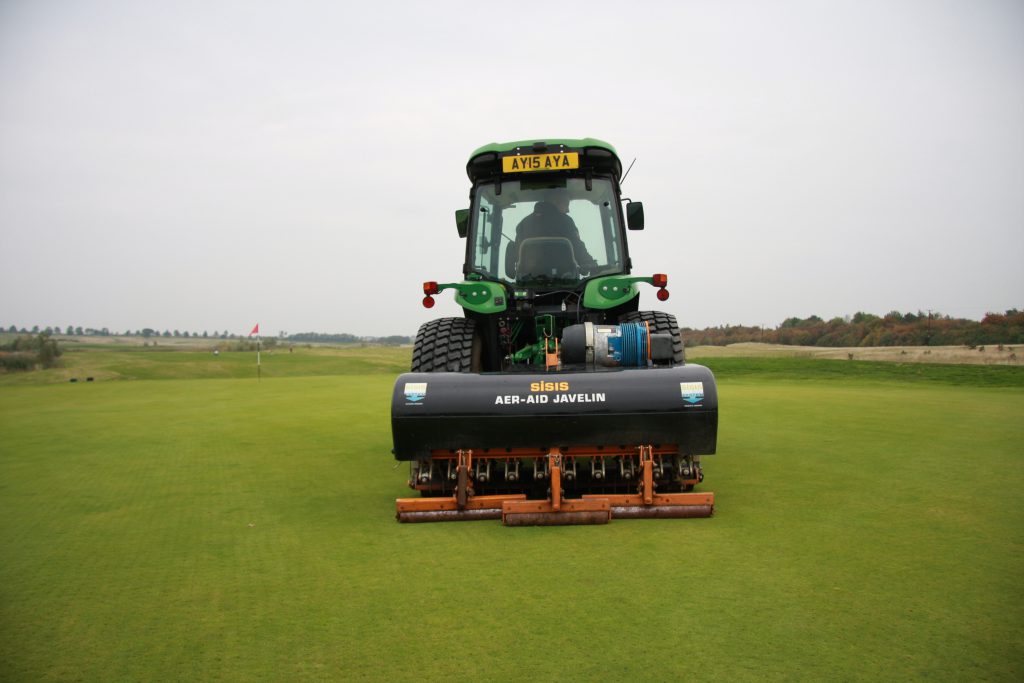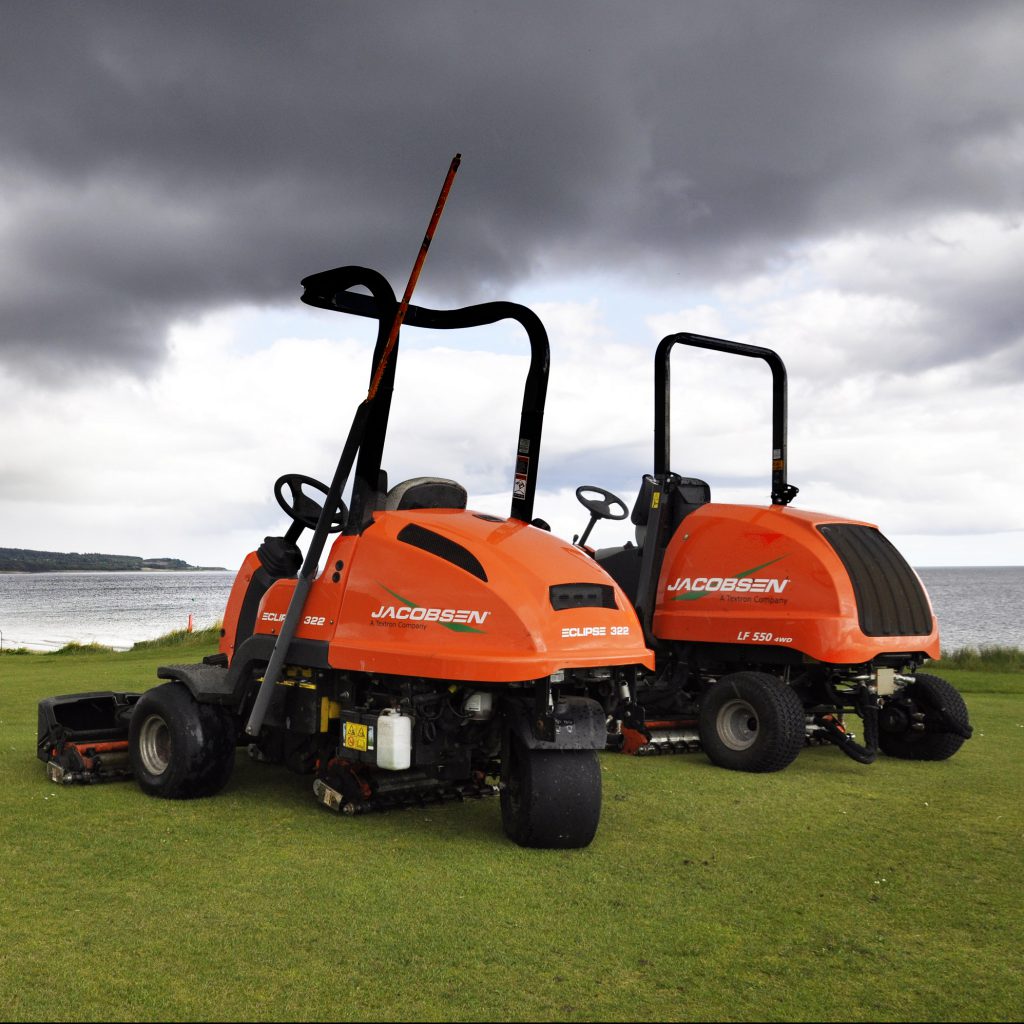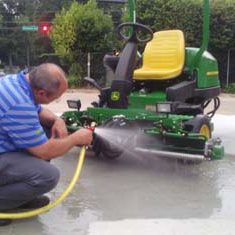How greenkeeping has changed in the last 40 years
As greenkeeping just involves mowing grass, the role of the greenkeeper, the machinery used and the courses themselves haven’t changed much in 40 years, right? ‘Absolutely wrong’ argues Paul Copsey
Over the last 35 years we have seen huge technological and innovative advancement in all areas of our lives. This is something that perhaps initially we don’t immediately equate to the machinery we use to maintain our golf courses or recognise the huge part that purchasing the right machinery has on the overall maintenance, presentation and efficiency with which we can run our golf clubs. Some of our fundamental principles for maintenance seem pretty mundane and in essence have, and do, not change; we cut grass using cylinder mowers on fine turf, mow longer grass with rotary blades, punch holes in the ground to aerify turf, spread sand over the surface as top dressing, spray chemical and plant protectant products.

While as the turf manager, or greenkeeper, we look at ‘better’ ways of doing this, we can sometimes miss the driver for what and how we buy our machinery for the benefit of the club, proprietor, course and ultimately – golfing customer. Purchasing machinery is a key business; an operational and an income driven choice.
If you can indulge me for a second on a trip down memory lane, I will look at some of my experiences as a greenkeeper ‘on task’ from 40 years ago and compare to how this might fit into the expected business and operational model of today – it initially won’t, but there are a few little nuggets that just might, once we put them into context. One of the overriding memories is actually just how little machinery we had and how long it took to carry out a task. We had to hand cut or pedestrian mow greens, tees, collars and approaches, we had no utility vehicles to transport men or machinery around the course, we often had one pretty unsuitable tractor to tow a trailer and a set of gang mowers to mow fairways, maybe a set of gangs for the rough (or maybe a set of spanners to adjust the height of cut so the fairway gangs could then cut the rough once reset), a pretty narrow pedestrian spiker for aerating turf or as I clearly remember, a fork! – yes, four men forking a green in unison, in lines, might get a green done in a day. The same four men might also get four greens top-dressed by hand in a day using shovels and rakes. Dressing or sand would be hand shovelled into a trailer towed behind a tractor also. Even for changing holes you would walk around the course carrying your kit or have it in a wheel barrow. I still remember there being a Ransomes Overgreen in the shed at one club I worked at, an early attempt at triple cutting greens, but if you wanted quality and the ends of your greens not worn out by turning, you would pedestrian mow; I could just about do 18 greens on my own in a day with an Auto Certes 21” pedestrian mower.

Bottom line here is that we did not carry out these tasks very often or to the same frequencies as we do today, golfer participation rates were lower (especially in the winter months), customer and golfer expectations were much, much lower. We could get a course looking ‘OK’ for the weekend – or in truth Friday afternoon and occasionally for a ‘major club competition’. You could simply not achieve the volume of work that we see today in the time available.
Coming into today’s world, we have to recognise the part played by television through the 1970s and the dramatic increase in golfer participation and with this ‘the expectation’. The golfer wanted what they saw on TV every day, every time he or she played, pretty much the same quality first thing in the morning, until last thing at night, and no greenkeepers plodding around getting in their way. I could perhaps also add that some of the ill-informed comments or quips by the friendly commentator or pundit also started to enter ‘golfer speak’ and colour their expectation. The initial driver for what you would purchase in a machine soon became increasing the frequency of task and the speed of task. The quality tended to initially stay the same – just improved by the fact that it could be done more regularly – 18 greens triple cut in summer in front of the players seven days per week by one man in three to four hours. Hand mowing might see greens only cut three times per week!
The next stage in this was subtle, but driven by a massive change to the whole business of golf. Purchasing machinery had an impact on selling or promoting your golf club. That momentous change was Way Forward – The R&A’s document that stated that to service the casual golf population in the UK, we needed 1,500 new golf courses and so the construction boom began – pretty much everywhere and anywhere. We probably all know now that this was folly and the root of some of the struggles for the industry in recent years – pure over-supply. To make my point though, the quality to which you can add to your turf, the presentation of the golf course and efficiency of your greenkeeping operation through purchasing the right equipment to service your operation, is a saleable commodity to your customers and services their expectations. This can be done at the right price and is directly linked to the bottom line. To be blunt, competition between clubs and courses for golfers and financial success and as we have recently seen – ultimate survival, has relied on the quality of the golf course as a product, the consistency with which this can be delivered and the efficient use of the greenkeeping labour. The rule of thumb is such that, as an annual cost, greenkeeping labour will be the most expensive item in your budget and will be around 70 per cent of the total annual maintenance budget. Having these guys working as efficiently as possible delivering the standards that the club and business needs in whatever sector of the market the courses is in, is key. I suppose the simple, modern example here could be the increase in green speeds that we can now achieve and the stripes that we seem to be able to place anywhere and everywhere on the course from mowing – golfers do talk, compare and make judgements on value and quality as they see it. This has an impact on them returning to a course as a casual customer or committing to membership.

I have literally spent millions of pounds on greenkeeping and turf machinery in the last 40 years – sounds really easy, but getting it exactly right does take a huge amount of work in a competitive and financially challenging environment. As a golf course manager and greenkeeper I have learnt a great deal by being challenged by a CEO or financial controller on the decisions I had to make – they had to make tough decisions on the business as a whole and I had to understand that business and justify what my choices were for servicing my greenkeeping teams, but also the success of each of the golf courses. At its height this would have been 30 sites, often 36 and 27 hole properties and a mix of pay-for-play, member, high end member and resort properties. Simply replacing ‘old’ items just does not cut it. Machines can always be repaired, but the key is ensuring that there is an overall plan and that any existing machine in a fleet is monitored for efficiency and cost. You do need to know from the maintenance plan what you are trying to achieve – that for a resort course will be different from the pay-for-play – but it is all relative; to deliver the standards in quality that the golfing customer expects for the price he is prepared to pay (are you meeting his perceived value?) There will come a point where that old machine starts costing you money in terms of parts, the biggest factor is actually sometimes difficult to track – ‘Down Time‘. If it is spending all of its time in the workshop and not out on the course, is your quality dropping back and threatening the quality of your product and not meeting your customers’ expectations? Will your new machine be quicker on task – time is money, remember the cost of your labour and may mean that you do not spend as much time out on the course in the way of your customers – can you finish a task before he or she gets there? Also, importantly today – is it fuel efficient? Apart from an emissions point of view, fuel use is a key part of any ‘life value analysis’ I would do on a machine just to see what it would cost to run, service and operate over an expected life time. One of my old fairway mowers used to guzzle nine litres of diesel per hour, so being able to factor in today’s hybrid technologies may have a massive impact on purchasing choices and allow important budget savings.
There are a wide range of factors that I would consider for my purchasing choices, perhaps here I have not really explored just how well modern machinery can perform tasks and deliver quality in specific areas of the golf course, or how much safer they are to operate. Some are simply just designed for doing some tasks better than others.

These are just some of the thoughts on this topic. In another 40 years we will be taking about autonomous mowers, the GPS guided sprayers and machinery, self-diagnosing machinery and taking electric power for granted, then in turn talking about today’s methods and practices being inefficient and dated. In a way, purchasing machinery is about innovation, technology, efficiency and progression. We will probably still need to mow, punch holes in turf, topdress it and apply products in one way or another! We will just do it slightly differently.
Paul Copsey is the managing director of Turf Machinery Acquisitions LLP, a company founded in 2017 in response to the need in the golf industry for greater efficiency and a more formalised structure for the purchasing of machinery. The company works as a consultant partner to ensure that golf courses and clubs purchase the equipment they need at the best price.
He is also a member of Golf Business International and was previously regional and group courses manager for both American Golf and Crown Golf, where he directed the agronomic planning and golf course management practices across all of their golf courses. With 40 years’ experience in golf course maintenance, turf agronomy, general management and golf business planning, he has significant experience and expertise in the specifying, negotiating and purchasing of turf equipment.
Tel: 07774 823119















Let me tell You a sad story ! There are no comments yet, but You can be first one to comment this article.
Write a comment